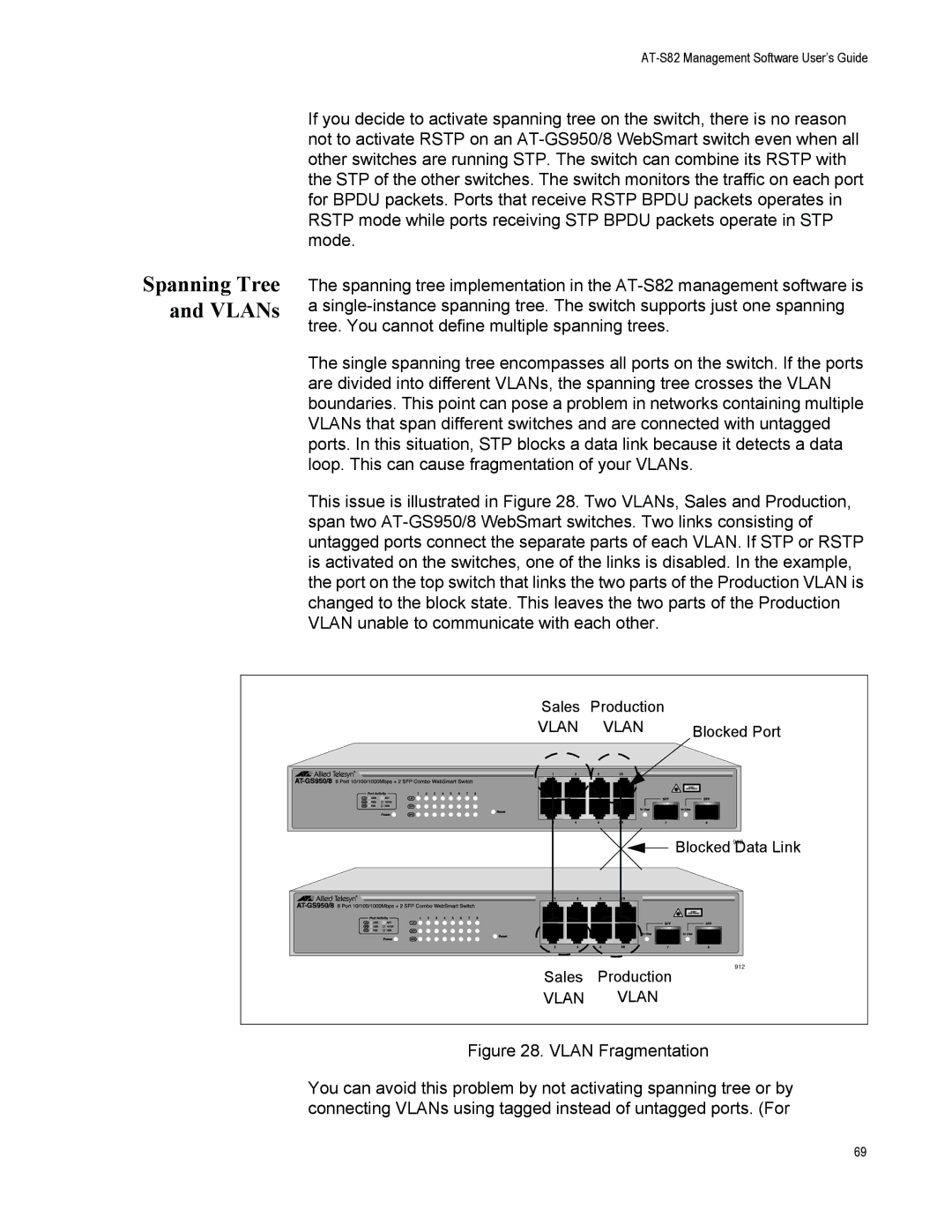
Spanning Tree and VLANs
AT-S82 Management Software User’s Guide
If you decide to activate spanning tree on the switch, there is no reason not to activate RSTP on an
The spanning tree implementation in the
a
The single spanning tree encompasses all ports on the switch. If the ports are divided into different VLANs, the spanning tree crosses the VLAN boundaries. This point can pose a problem in networks containing multiple VLANs that span different switches and are connected with untagged ports. In this situation, STP blocks a data link because it detects a data loop. This can cause fragmentation of your VLANs.
This issue is illustrated in Figure 28. Two VLANs, Sales and Production, span two
Sales | Production |
|
VLAN | VLAN | Blocked Port |
|
| 912 |
|
| Blocked Data Link |
Sales | Production | 912 |
| ||
VLAN | VLAN |
|
Figure 28. VLAN Fragmentation
You can avoid this problem by not activating spanning tree or by connecting VLANs using tagged instead of untagged ports. (For
69
